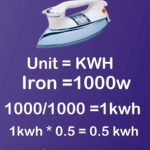Polyester is a synthetic fiber made from recycled materials and has been around for a long time. It is often used in clothing because it is wrinkle-resistant and color-fast, but can also be found in other items such as curtains, furniture, and bedding. Moreover, it is one of the most commonly used fabrics, especially for sports clothes.
In this blog post, we will discuss everything you need to know about polyester. How to care for it, and what types of items are made from this versatile fabric. How to iron polyester and what temperature setting is ideal to keep while ironing.
Polyester fabric has its potential, it does not absorb moisture, is great for stain resistance, is cheap, easily dyed and some polyesters are wrinkle resistant.
How to Ironing a Polyester Dress: Step-by-Step Guide
In This Article
Ironing polyester can be a tricky task, as the fabric is prone to shine and scorching. However, with the right technique and tools, you can effectively press your polyester garments without any damage.
- Check the fabric care label to see if it is safe to iron.
- Preparing a polyester dress for ironing requires special attention to hiding seams and turning the garment inside out. Seams can easily burn or show marks from the iron, so they should be turned towards the inside of the dress before pressing.
- Place the polyester item on an ironing board or other flat surface.
- Set your iron to the correct heat setting – usually, medium heat will work. After that preheat your iron to the desired temperature.
- Place a protective ironing scorch mesh cloth over the garment to protect the cloth from burning or shining. Iron, in short, even strokes moves from the top of the fabric to the bottom.
- Flip and repeat on the other side.
- If there are any wrinkles or creases in the fabric, hold the iron still on top of them for a few seconds until they disappear
- Allow the garment to cool down before folding or hanging it up
What type of iron should you use to press a polyester dress
An iron with a steam function or a dry iron?
When it comes to ironing polyester fabric, it’s important to pay attention to what type of iron you use. A steam iron with a variable steam function is best for this type of fabric. Polyester can easily melt under high heat, so make sure to set the iron to a lower temperature if you’re using a dry iron without a steam function.
Additionally, pressing polyester fabric with steam at medium-high temperature will help release any wrinkles and give your garment a nice, smooth finish. As always, it is important to first consult the garment’s care label on a cloth before ironing to ensure that you don’t accidentally damage the fabric.
Overall, for added precision and control, look for an iron with adjustable temperature settings and a small tip to easily navigate around buttons and seams.
At what temperature can you iron polyester?
One of the most important steps in clothing care is ironing, and setting your iron to the proper temperature can make all the difference. The first thing to keep in mind is to always check the garment label for recommended settings. Different fabrics require different temperatures; for example, cotton and linen should be ironed at a high temperature. While delicate materials like silk or polyester should be ironed at a lower heat.
In addition, you may also want to consider investing in a fabric-specific iron. As some fabrics such as silk or sequined items require steam at a lower temperature. Once you have selected your desired temperature, it’s always best to test it out on an inconspicuous area of the garment before pressing the entire piece. This ensures that you don’t accidentally damage the fabric with excessive heat.
By following these guidelines, you can ensure your clothes are smoothly pressed without causing any damage.
How to Iron Polyester Curtains
Ironing polyester curtains may seem intimidating, but it’s a fairly straightforward task. First, make sure to check the care label on your curtains before ironing. If the label says to Iron on low heat or to use a pressing cloth, be sure to follow those instructions.
Next, hang your curtains up on a rod or put them flat on an ironing board. Iron the backside of the curtain first. Start ironing at the top of the curtain and work in small sections, using slow, gentle strokes until the wrinkles are smoothed out. Be careful not to leave the iron stationary in one spot for too long as this can burn and damage the fabric.
For extra stubborn wrinkles, try steaming with a handheld steamer or dampening the fabric with a spray bottle before ironing. With a little patience and care, you can easily Iron your polyester curtains for a polished, wrinkle-free look.
How to Iron Polyester Jacket
Ironing a polyester jacket may seem like a daunting task, but with the right preparation and technique, it can be simple and hassle-free. First, make sure to check the label on your jacket for any special care instructions.
Next, lay your jacket flat on an ironing board and place a pressing cloth or clean towel over the fabric to protect it from excessive heat. Iron in small sections, using short strokes and applying firm pressure.
Be sure to iron both the front and back of the garment, paying extra attention to seams and creases. Finally, hang your jacket when finished to let it cool and retain its shape. Following these steps will leave your polyester jacket looking crisp and wrinkle-free.
How to Iron Polyester Pants
Ironing polyester pants can be a tricky task, as the material tends to easily get shiny and wrinkled. As the fabric is heat sensitive and can easily get burnt or shattered. That’s why it’s important to take a few extra steps. However, with the right technique, you can achieve a smooth and unwrinkled finish.
First, make sure to always use a low heat setting and test an inconspicuous area before ironing the entire pant leg. Next, never iron over buttons or zippers, as they may scorch the fabric. Further, iron over a pressing cloth or towel to protect the fabric from direct heat.
Iron in strokes, following the grain of the fabric. If necessary, use a bit of water or spray starch for added crispness. When finished, hang the pants immediately to prevent new wrinkles from forming. By following these steps, you can ensure your polyester pants look as sharp as possible.
Tips for Ironing Polyester Fabric
Some common mistakes people make when pressing polyester dresses- not using an appropriate type of iron, not hiding seams, not setting the temperature correctly, pressing in the wrong direction, and not allowing enough time for heat to penetrate the fabric.
It’s important to use the correct type of iron and the correct temperature setting. Using a steam iron or an iron with settings for synthetic fabrics will help ensure that you don’t damage the fabric.
Always press in a slow and deliberate motion, following the direction of the fabric’s grain to avoid creating wrinkled or stretched areas.
When it comes to ironing polyester fabric, it’s important to remember that this material is heat-sensitive. Therefore, it’s best to use the desired temperature setting on your iron and avoid pressing too hard.
Iron in small strokes, don’t try to rush the process by constantly lifting the iron to check on your progress; give the heat enough time to penetrate and smooth out wrinkles before lifting the iron again.
As you begin ironing, test a small section of the fabric first to check for shine or scorching.
Another tip for preparing a dress for pressing is to tuck in or hide any loose seams or dangling threads. This ensures that they don’t get caught in the iron and potentially tear or damage the fabric.
Additionally, try not to hold the iron in one spot for too long to prevent any shiny patches from forming.
In addition, using a pressing cloth or thin towel between the iron and fabric can also prevent potential damage. When in doubt, err on the lower side and gradually increase the temperature until you find the sweet spot. With these tips in mind, you can easily iron polyester and other fabrics without causing any damage.










